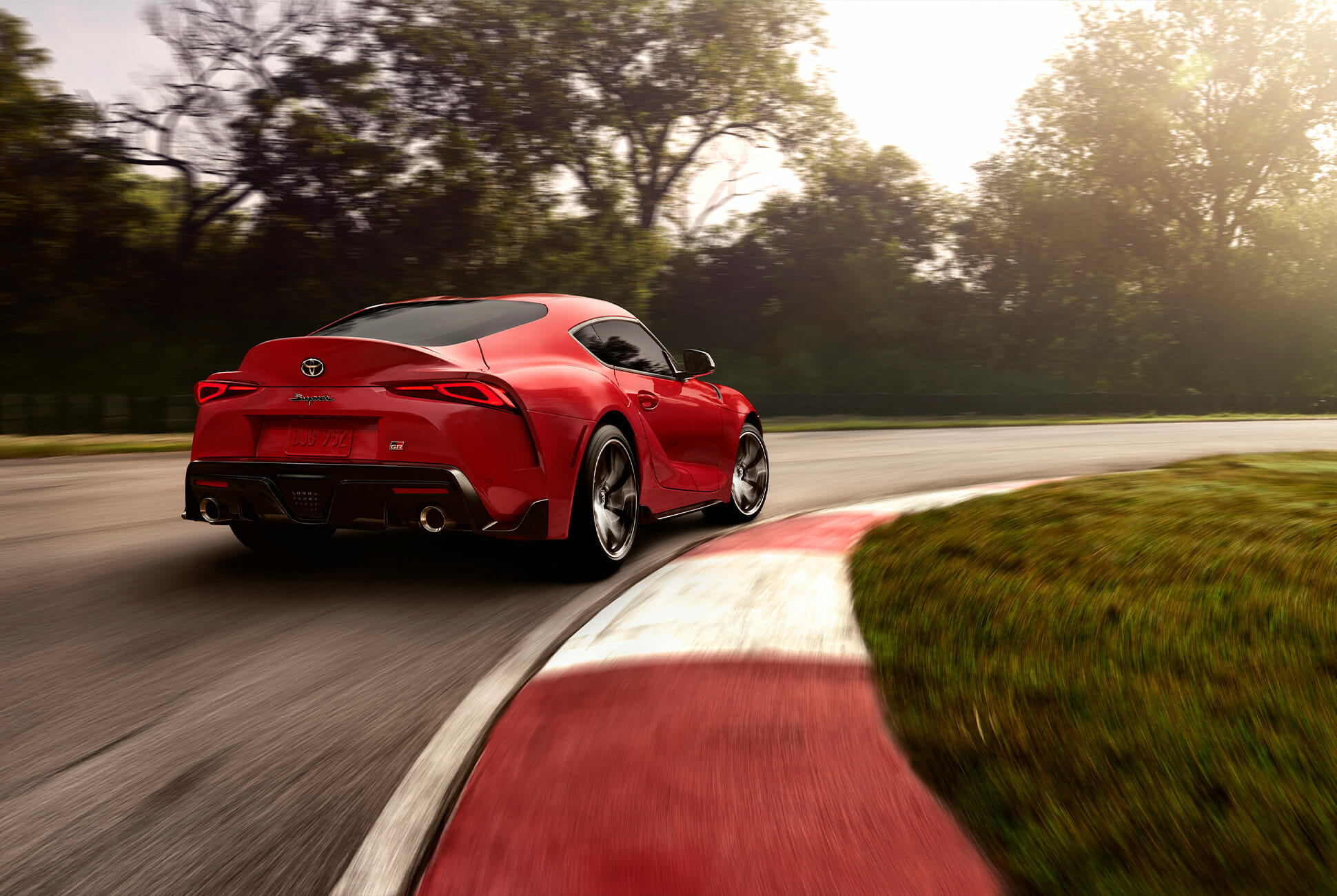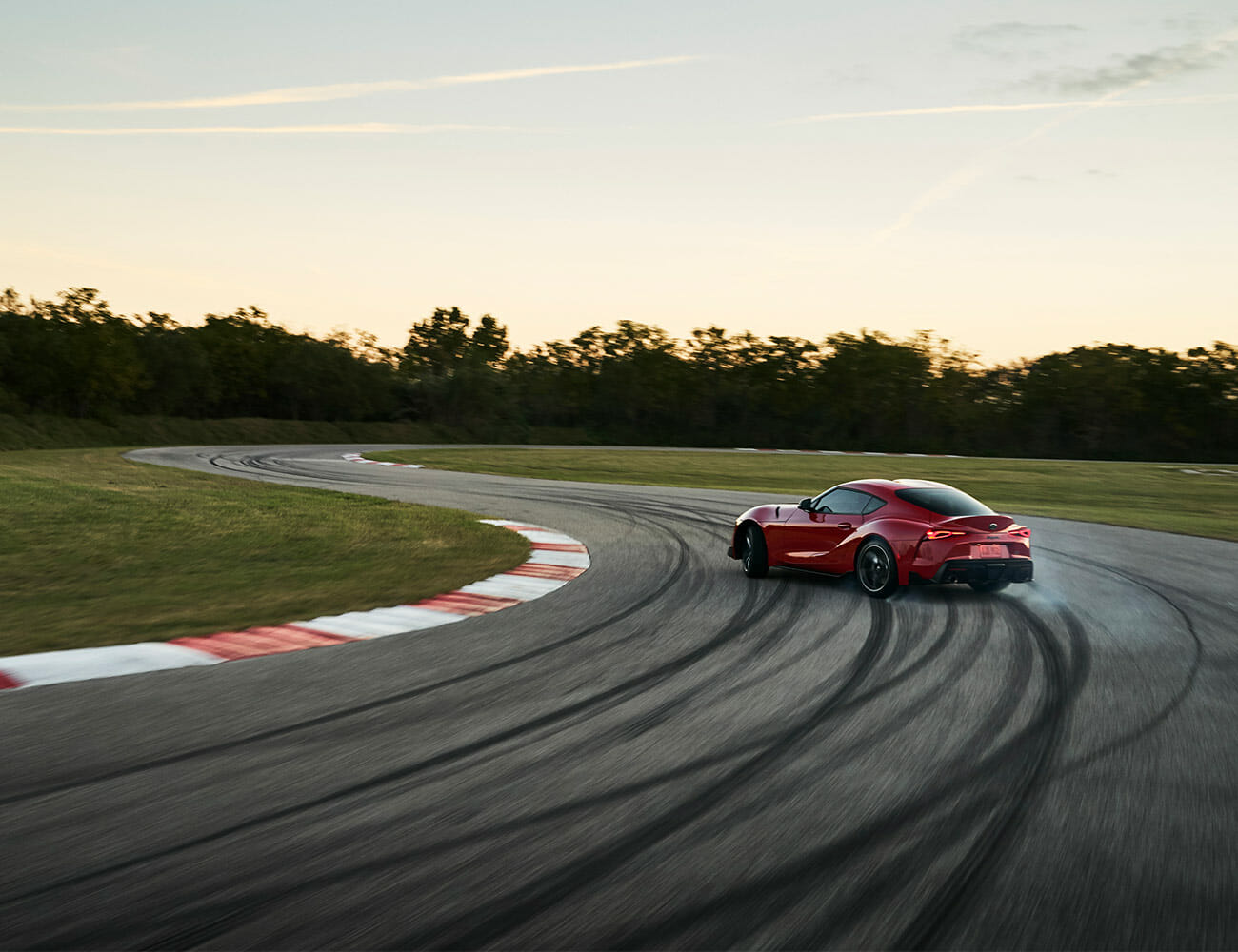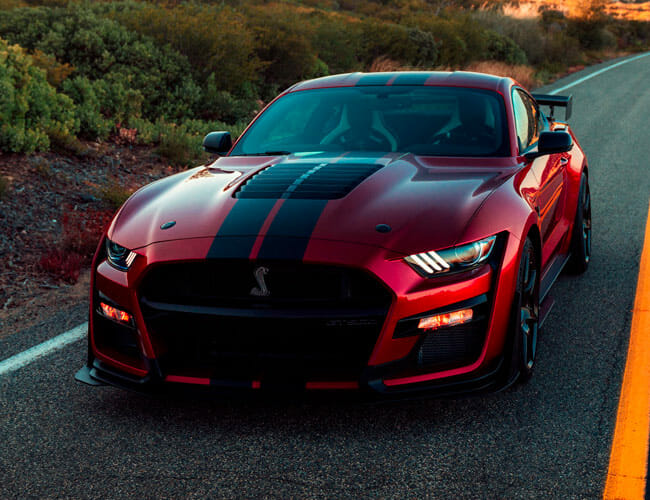After a nearly 20-year absence, the Supra name returns to the Toyota lineup, making it clear Toyota is hell-bent on changing the world’s perception of its cars. The new Corolla hatchback was a declaration of war on Toyota’s modern reputation for milquetoast cars; the 2020 Supra is the first major offensive.
One look at the Japanese manufacturer’s current lineup and sale figures, and it’s easy to see how Toyota gained a lackluster reputation for blandness. Sure, performance off-roaders like the Tacoma TRD Pro and 4Runner TRD Pro and the nimble GT 86 coupe suggest otherwise, but Toyota didn’t sell 427,000 GT 86s in 2018 — that honor goes to the Rav4. Toyota also sold just shy of 344,000 Camrys and 290,000 Corolla sedans, meaning about 1,000,000 direct customer interactions with the Toyota brand is with either an uninspiring, forgettable car or compact SUV. Toyota, however, is beginning an about-face, led by the Supra, at the Detroit Auto Show.
Bringing the Supra back is meant to inject energy back into the company: it is a halo car, a performance flagship. Toyota acknowledges it’s not practical and at $49,990 base MSRP, they know it’s aspirational. but, crucially, is still relatively obtainable. Jack Hollis, Toyota North America Group Vice President and General Manager, said one of the top priorities of the new Supra is to be “aspirational, but something the driver can truly have fun in.” He elaborated that the for the first time since the GT86, Toyota is making a car aimed at “those who want to be on a track.”

Photo: Toyota
Toyota CEO, Akio Toyoda, is a racer: according to the Toyota Senior Vice President Bill Fay, Toyoda “has gasoline running through his veins.” Not only did Toyoda oversee the final stages of the Supra’s development, he personally helped in the final tuning of the brakes, steering and suspension. “Committees don’t build cars like the Supra. Finance departments are never going to greenlight a car like the FT-1 Concept,” Fay says. “But we have a CEO that says it’s worth putting [engineers] to work for five years to bring the [Supra] to market. If we had any other CEO, this car wouldn’t be here.”
Conversely, the lack of performance-focused Corolla advertisements was its secret success. It’s a nameplate hundreds of thousands of people are already buying and driving. Toyota snuck genuine performance into the Corollas without pandering to enthusiasts and, consequently, scaring off the customer base – that’s how you get the masses to change their minds about your cars. Case in point: at the Detroit Auto Show, while everyone was distracted by the big Supra reveal, Toyota also snuck a TRD-tuned Camry and Avalon on to show floor.
Toyota isn’t distancing themselves from its bread and butter; it’s simply using the Supra flagship tactically. “The Toyota group sold 2.8 million vehicles in 2018 – [almost entirely] SUVs, CUVs, pickups and sedans. We’re not moving away from the heart of the market, but we want to be a full line manufacturer,” says Fay. It’s impossible to deny the sales success of those massive segments, which is why it’s becoming more difficult to justify relatively low-volume sports cars. That’s why Toyota collaborated with BMW to jointly develop the Supra and Z4 roadster. The team up is also the source of most of the controversy surrounding the Supra.

Photo: Toyota
Enthusiasts and purists are the toughest car crowds to please. Thanks to the past Supra’s cult following, the new car actually developed more than a few ardent detractors. Its engine and powertrain components are sourced from BMW and there won’t be a manual transmission available, so Toyota is somewhat on the defensive with those purists. Supra Chief Engineer, Tetsuya Tada, doesn’t deny the lust for an old-fashioned transmission. Tada San says, “if there’s a persistent, overwhelming demand for a manual transmission, the nature of a sports car inherently is to improve, and that’s when we’d consider it — if the market demand is there.” But Tada San seems confident in the performance of the new sports automatic and says if you drive the new Supra, “you experience that right away. For Toyota enthusiasts old and new [and] up and coming fans of the [Supra], I’d like them to have them experience this new generation of automatic transmission and the whole experience of driving with it.”
There is also a non-Toyota (instead, BMW) inline-six powering the iconic car. Toyota wants Supra fans to understand that this collaboration with BMW isn’t a repeat of the carbon-copy 86 and Subaru BRZ project. In that instance, they tried to share as many components as possible to validate a low-selling sports car. But this time around, Tada, who was the chief engineer on that project too, says “the positioning of the sports car is higher. I had a specific vision of the Supra I wanted to create. With the Z4, BMW said they want to do ‘this’ or they want to do ‘that,’ — that had no effect on my vision on what I wanted to do.”
Without the BMW collaboration, there most likely wouldn’t be a new Supra at all. As a halo car and performance flagship, Toyota wouldn’t be able to turn its image around. They know it won’t sell anywhere near as well as the Camry, and Fay says it’s not even an aspiration to do so. “This is a Supra, through and through. It’s not a car that you need. It’s a car that you want.”
If the 2019 Detroit auto show is any indication of the next year or two, it seems manufacturers are just as sick of monotonous committee-built cars as we are. Read the Story


